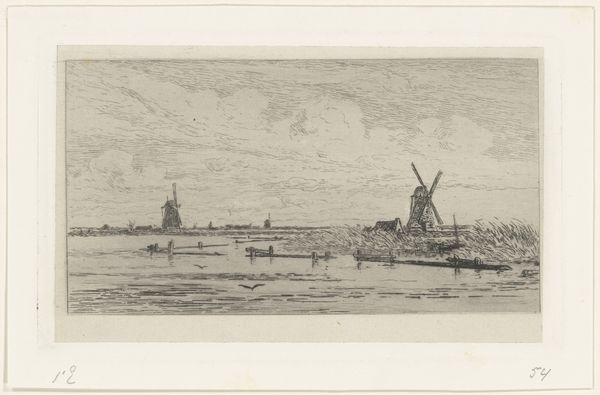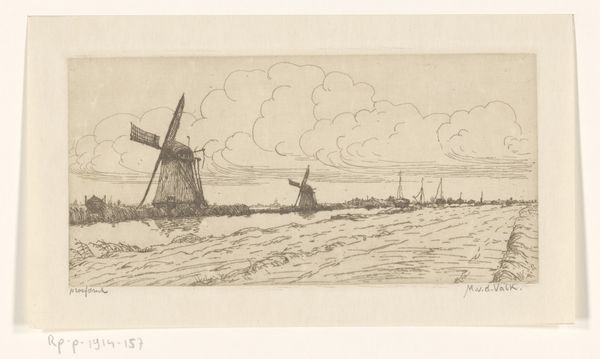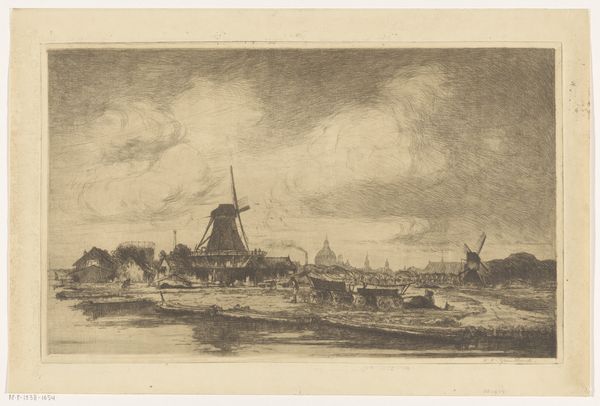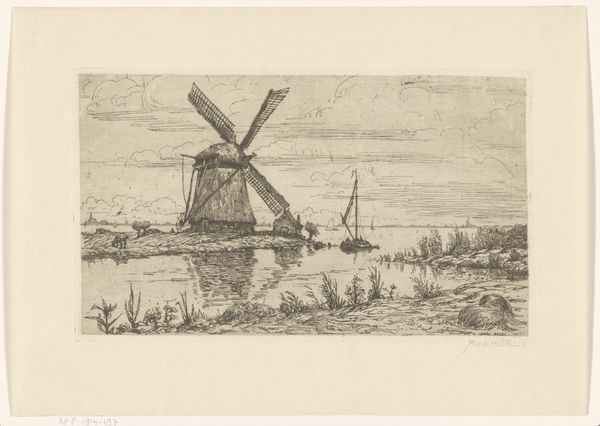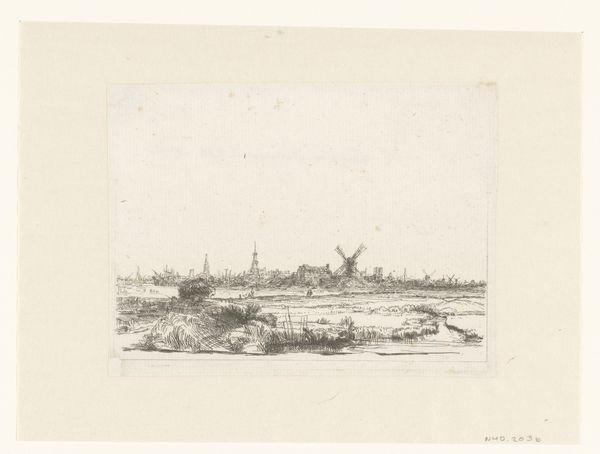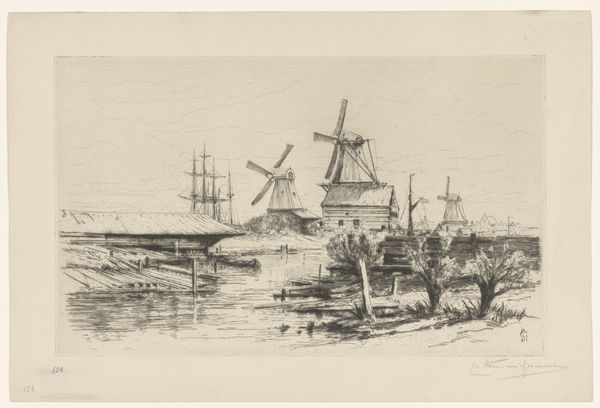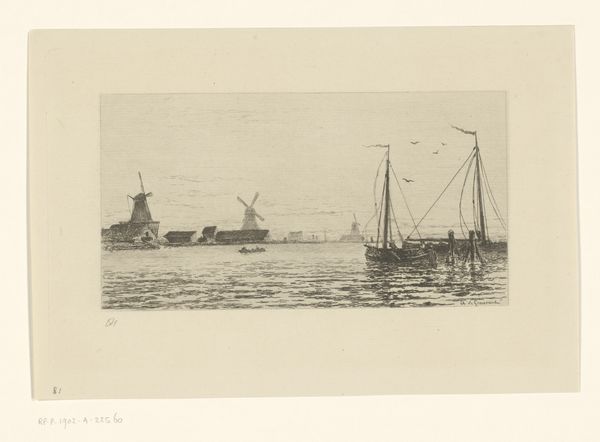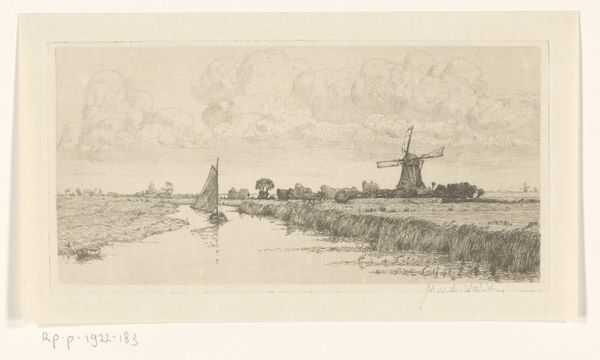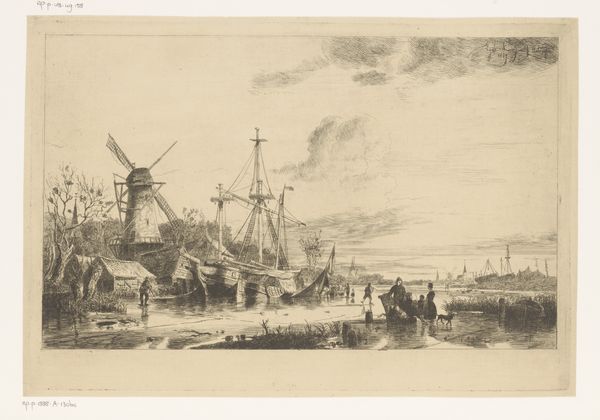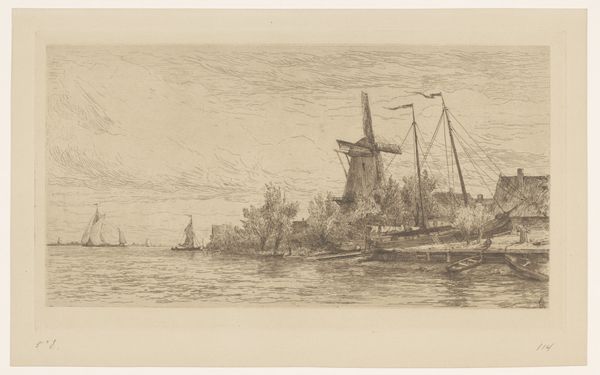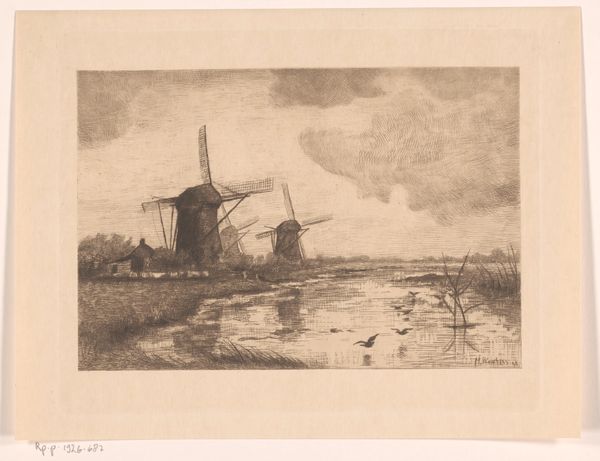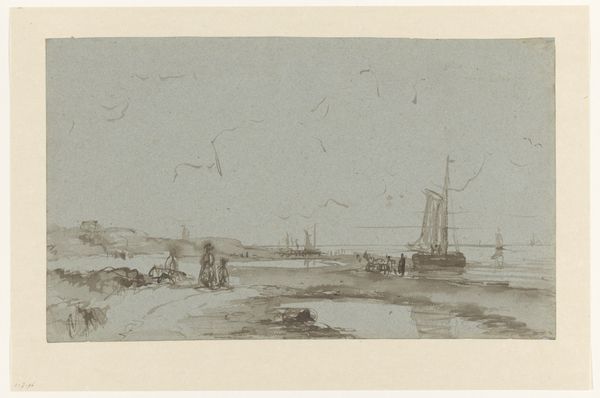
print, etching
#
dutch-golden-age
# print
#
etching
#
old engraving style
#
landscape
#
river
#
line
Dimensions: height 159 mm, width 248 mm
Copyright: Rijks Museum: Open Domain
Editor: This is "Molens aan de Vecht bij Weesp," an etching by Carel Nicolaas Storm van 's-Gravesande, around 1875. It depicts windmills and a boat along a river. I'm immediately struck by how this seemingly simple landscape hints at the socio-economic landscape of the time. What do you see in this piece that resonates with broader historical narratives? Curator: It's a beautiful example of Dutch Golden Age aesthetics persisting into the 19th century, but filtered through a new lens. We have to consider the role windmills played – not just picturesque features, but power sources crucial to the Netherlands' economic might. How did this reliance on wind power shape social hierarchies and the country's relationship with its environment? Editor: That’s a good point. The windmills aren't just quaint, they represent power structures. And the river connects it all; facilitating trade, travel, everything. Does the artist’s choice of etching, a printmaking technique, speak to anything about accessibility and distribution of such images? Curator: Exactly! Etchings allowed for wider circulation, bringing images of Dutch prosperity – carefully curated – to a broader audience, perhaps even mythologizing the nation's success. Consider the romanticism imbued in landscape art; it often served as a form of national branding, subtly reinforcing narratives of cultural and economic superiority. Who did that leave out, and whose labor literally kept the mills turning? Editor: It’s easy to look at pretty landscapes and not think about those questions. It gives me a lot to think about – the social implications of landscape art and the power dynamics inherent in seemingly simple scenes. Thanks for opening my eyes to this perspective! Curator: My pleasure! It is our job as critical thinkers to constantly reassess how art engages with, reflects, and sometimes obscures, social realities.
Comments
No comments
Be the first to comment and join the conversation on the ultimate creative platform.
